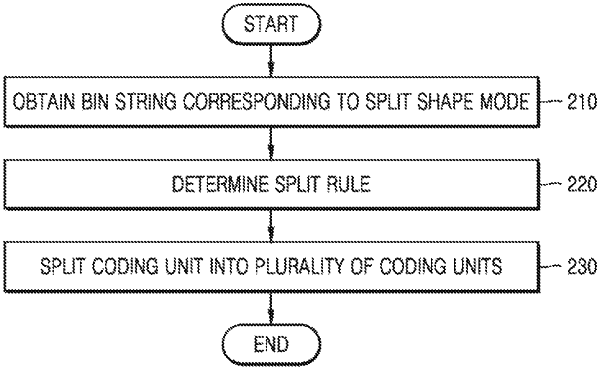| CPC H04N 19/52 (2014.11) [H04N 19/119 (2014.11); H04N 19/139 (2014.11); H04N 19/159 (2014.11); H04N 19/176 (2014.11); H04N 19/186 (2014.11); H04N 19/527 (2014.11)] | 3 Claims |

|
1. A video decoding method comprising:
obtaining an affine parameter of a current block if a prediction mode of the current block is an affine mode;
determining motion vectors of a plurality of sub luma blocks using the affine parameter of the current block, wherein the plurality of sub luma blocks are included in the current block;
determining a mean luma motion vector for four sub luma blocks among the plurality of sub luma blocks by using one set between a first set and a second set, wherein the four sub luma blocks including a first sub luma block, a second sub luma block, a third sub luma block, and a fourth sub luma block;
determining the mean luma motion vector to be a motion vector of a current sub chroma block corresponding to the four sub luma blocks; and
performing prediction on the current sub chroma block by using the determined motion vector,
wherein the first set includes a motion vector of the first sub luma block and a motion vector of the fourth sub luma block, and excludes at least one of a motion vector of the second sub luma block and a motion vector of the third sub luma block, and
wherein the second set includes the motion vector of the second sub luma block and the motion vector of the third sub luma block, and excludes at least one of the motion vector of the first sub luma block and the motion vector of the fourth sub luma block,
wherein the first sub luma block is located an upper-left portion of a four neighboring sub luma blocks, the second sub luma block is located an upper-right portion of the four neighboring sub luma blocks, the third sub luma block is located an lower-left portion of the four neighboring sub luma blocks, and the fourth sub luma block is an lower-right portion of the four neighboring sub luma blocks.
|